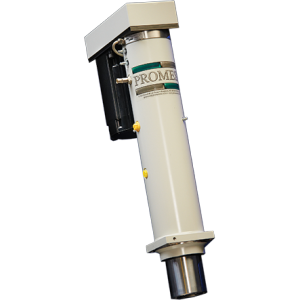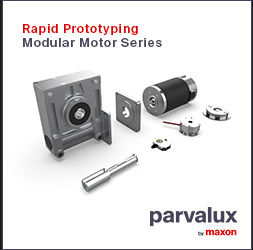Process Data is the input for the second generation of data-driven quality technologies. The technology is particularly useful in assemblies such as control arms which combine heavy-duty stamping with resilient components that are difficult to position accurately and repeatably.
Data-Driven Quality Needs Quality-Driven Data
Contributed By | Promess
When Henry Ford started building the Model T, components such as bearings and gears were often assembled with hammers or an arbor press. In the hands of a skilled worker who knew what a successful operation felt like either could produce an acceptable level of quality.
That all changed when hydraulic presses replaced human muscle with a push button so the operator never felt anything. Operator skill was replaced by gages and other post process inspection technologies.
 Direct Part Data from those inspections was the input for the first generation of data-driven quality technologies. The natural evolution of this approach focused on increasing manufacturing precision. The theory was that perfect components would yield perfect assemblies and eventually do away with the need for all that expensive post process inspection.
Direct Part Data from those inspections was the input for the first generation of data-driven quality technologies. The natural evolution of this approach focused on increasing manufacturing precision. The theory was that perfect components would yield perfect assemblies and eventually do away with the need for all that expensive post process inspection.
It was a good theory, but it didn’t work out quite as planned. The problem is that the technology to meet those tolerances is not free. The ultimate result is a dimensionally perfect product that nobody can afford to buy.
But there are hundreds of assemblies in the typical automobile that don’t need that kind of precision at all. Nevertheless, as long as they’re put together with a “dumb” hydraulic press there really isn’t a practical alternative.
What was needed was a press that can “feel” how the components go together like Henry Ford’s skilled workers did. Fortunately, that technology exists. It combines a servo driven electric press equipped with sensors and a computer to analyze the process and adjust it in real-time.
Process Data is the input for the second generation of data-driven quality technologies. The technology is particularly useful in assemblies such as control arms which combine heavy-duty stamping with resilient components that are difficult to position accurately and repeatably. Manufacturers typically specify a finished geometry for the assembly, but leave the job of achieving it to the supplier. This is known as a phantom dimension.
Achieving a phantom dimension with conventional tooling is extremely difficult. The “press and hope” followed by the “measure, sort and re-work” approach is not very cost effective. But a Process Data driven “press-measure-press” process can improve the quality of phantom-dimensioned assemblies significantly.
In fact, it’s quite possible that the tolerances on the component parts can be loosened to reduce manufacturing costs with no impact on the finished product’s functional quality. That points the way to a third generation of data-driven quality based on looking at quality the way a consumer does.
A consumer doesn’t care how precisely a part was machined, they measure quality in different terms. Does it work? Does it “feel” like a quality product? And, does it last long enough to represent a reasonable value for the money spent?
Consumers don’t expect perfection and they are not willing to pay for it. Function is the consumer’s measure of quality and it ought to be the manufacturer’s as well.
Functional Data is the input for the third generation of data-driven quality. This approach uses the intelligence of the servo/sensor/computer system to measure the function of the assembly while it’s being assembled instead of the force/distance measure used in Process Data-driven operations.
Riveting is an excellent example. Assemblies such as hood latches typically are made from stampings held together with a rivet. Peen the rivet too much and the latch is stiff, peen it too little and it feels sloppy.
By measuring the force needed to actuate the latch while the rivet is being peened by a servo-press it’s possible to produce consistent function even though the components have wide dimensional variations. The consumer gets a quality impression when the latch is used and the manufacturer gets an opportunity to loosen tolerances and reduce production costs.
In a sense, the Functional Data-driven operation has returned assembly quality assurance to its roots. But today the feel of a good assembly is no longer in the hands of a skilled craftsman, it’s in the intelligence of an electro-mechanical system that brings it a full step closer to perfection.
The content & opinions in this article are the author’s and do not necessarily represent the views of ManufacturingTomorrow
Comments (0)
This post does not have any comments. Be the first to leave a comment below.
Featured Product

